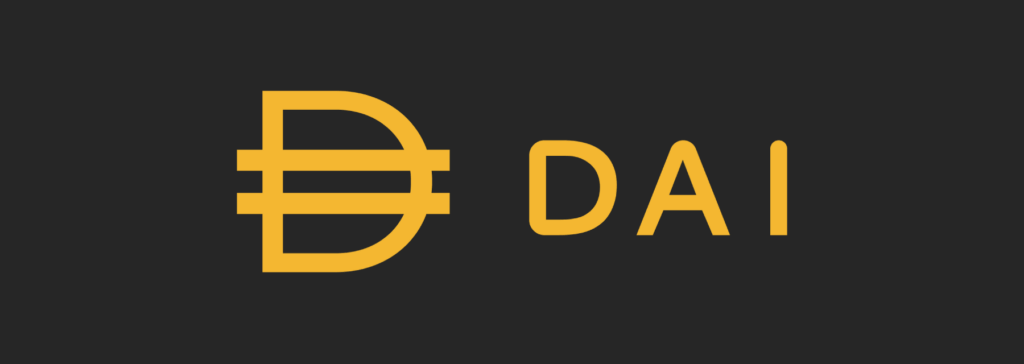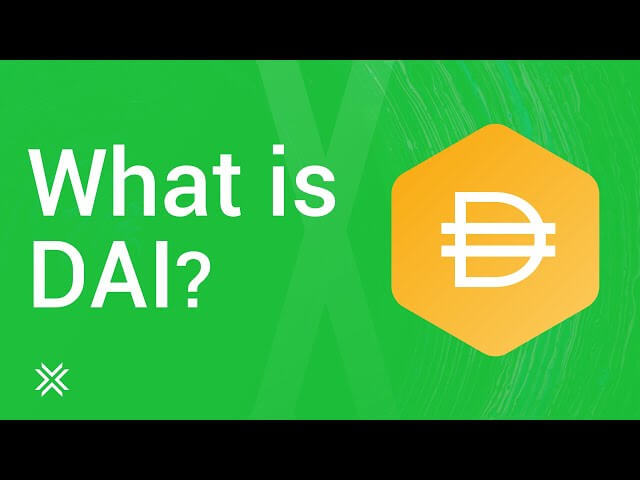Dai (DAI)
The DeFi stablecoin from MakerDAODai is an Ethereum-based stablecoin pegged to the US dollar via a system of smart contracts and incentivised decentralised participants. It provides an alternative to centralised stablecoins like Tether and USDC. Read on to find out everything you need to know about Dai.

What is Dai (DAI)?
Formerly known as Sai or SAI, Dai is a decentralised stablecoin governed by the MakerDAO decentralised autonomous organisation. Formed in 2014 by Danish entrepreneur Rune Christensen, MakerDAO was a trailblazer in the DeFi space. Via the Dai stablecoin and smart contracts, MakerDAO lets people take out decentralised loans.
The Dai cryptocurrency and related smart contracts were launched on Ethereum in December 2017. After almost a year of successful operation, during which Dai was kept very close to parity with the US Dollar, MakerDAO received a $15M investment from venture capital firm Andreessen Horowitz. The following year, MakerDAO established the Maker Foundation in Copenhagen, with the aim of helping catalyse the MakerDAO ecosystem.
| Did you know? In July 2021, Rune Christensen stepped down as CEO of Maker Foundation, and the foundation was formally dissolved, marking the final transition of Maker into a fully decentralised, self-sustainable organisation. Source: The Defiant |
Dai Basics
Via a DApp (decentralised application), MakerDAO’s smart contracts allow people to access DeFi loans. By depositing Ether, or selected other cryptos, as collateral, users receive newly minted Dai. Importantly, all loans are over collateralized by a significant degree, with a typical Ether collateralization ratio of at least 150%. Hence, if by depositing $150 of Ether, you can borrow up to $100 worth of Dai – which should be almost exactly 100 Dai. This helps ensure a robust and sustainable ecosystem.
As previously mentioned, new Dai is issued when users take out over collateralized loans. When a loan, and its interest, is repaid, the Dai is returned and burned (destroyed), while the collateral is then cleared for withdrawal. Theoretically, this means the value of Dai is backed by the US dollar value of the collateral – though not actual fiat currency.
MakerDAO maintains Dai’s value as close as possible to USD by managing the loan parameters, like accepted collateral, collateral ratios, and interest rates for borrowing and storing Dai. To enable this process, MakerDAO itself has a governance token called MKR. Its holders are able to vote on any proposals, with voting weight proportional to the amount of MKR tokens held.
Dai Blockchain
Like the majority of DeFi projects, the Dai stablecoin is based on the Ethereum blockchain. Ethereum uses a proof-of-stake (PoS) consensus mechanism to secure the blockchain.
Dai Issuance and Staking
New Dai is minted for each new loan, and then destroyed after the load is repaid.
Dai Supply
Dai itself does not have a limited supply, but the circulating supply is actively managed by MakerDAO to ensure stability.
Dai Adoption & Usability
Like other stablecoins, Dai has several use cases:
- Hedging – Using Dai to store value while avoiding volatility, without exiting the crypto ecosystem.
- Trading – Stablecoins can make crypto-to-crypto trading easier and clearer, by removing volatility on one side of the equation.
- Day-to-Day Payments – You can use Dai to pay for goods and services.
- International Payments – Using a stablecoin like Dai for cross-border transactions and remittances is much quicker and cheaper than using the traditional financial system.
- Prediction Markets and Gambling – Again, locking in price stability can be very useful for these use cases.
- DeFi – Dai can be used as collateral and repaying debt.
Dai holders can also lock their DAI into the Dai Savings Rate (DSR) smart contract. This feature helps MakerDAO influence demand via monetary policy control, and rewards users with interest.
Dai Fees & Speed
As an Ethereum-based crypto, Dai transactions are subject to gas fees which must be paid in gwei (sub unit of ETH). Unfortunately, this also means Dai can suffer from the inherent congestion issues of the Ethereum network. However, there are projects like xDai, that are sidechains running on the Dai network, offering much faster and cheaper transactions.
| Did you know? As of 20 October 2022, Dai was the world’s 13th biggest cryptocurrency by market capitalisation, which stood at just over $5.75 billion. This is compared to Bitcoin’s $364.31 billion, and Tether’s $69.45 billion. Source: CoinGecko |
Dai Security and Safety
Although, like all cryptos, there have been instances of DAI being stolen from third-party platforms, like crypto exchanges and vaults, the network itself has proven very secure.
Security and safety tips:
- Don’t leave your DAI on exchanges. Use exchanges for buying and selling only. Always transfer your crypto to a local wallet for short-term storage.
- For long-term storage, keep your crypto in a hardware wallet.
- Always keep your wallet keys in multiple safe places – they cannot be recovered.
- Never tell anyone about your crypto holdings. No matter how secure your storage is, if you or your loved ones are physically threatened, you’ll probably hand over your personal keys.
Dai Volatility
Although MakerDAO has successfully managed to keep Dai very closely pegged to the US dollar for the majority of its history, there is no absolute guarantee it will always be 1-to-1. In fact, according to CoinGecko, for a brief time on 25 November 2019, it dropped to $0.90, while on 13 March 2020 it hit $1.22. However, both times, MakerDAO was able to reestablish the peg.
Final Word on Dai
Although many people prefer to use stablecoins that claim to be backed on a 1-to-1 basis with real cash (or other traditional assets, like treasury bills), like Tether (USDT) or USDC – especially after the Terra LUNA disaster, MakerDAO has proven quite able to keep Dai on track.
Does this mean it is entirely safe? Nope. Nothing is guaranteed. But, Dai does have the advantage of decentralisation, theoretically meaning it doesn’t have concentrated points of potential failure. The same can’t be said for USDT or USDC, both of which are essentially centralised.

